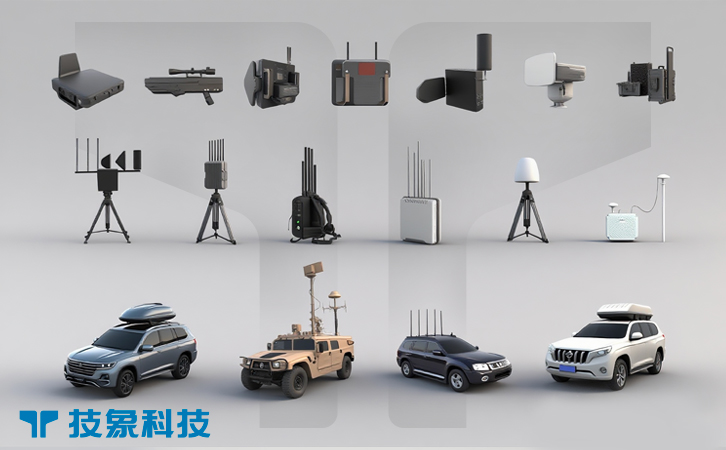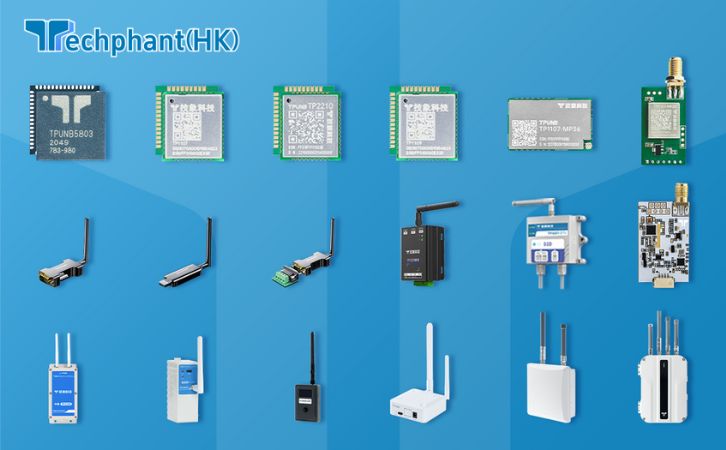The drone landscape in 2025, with over 6 million unmanned aerial vehicles (UAVs) in operation worldwide, has made radio frequency (RF) defenses essential, as rogue drones use sophisticated communications to evade detection and control. Software-defined radios (SDRs), flexible devices that use software to configure hardware for RF signal analysis, jamming, or spoofing, have become a versatile counter-drone technology. These systems allow users to tune frequencies, decode protocols, and disrupt drone links on the fly, ideal for dynamic environments like borders, events, or military patrols where threats vary. Unlike fixed-frequency jammers or dedicated sensors, SDRs offer reconfigurable, multi-function capabilities in compact forms, enabling rapid adaptation to new drone models. This article explores the adaptive drone threat, the mechanics of SDR systems, their real-world applications, and the challenges and future potential of this programmable counter-UAV tool.
I. The Adaptive Drone Threat and Need for SDR Systems
Rogue drones have adapted to countermeasures, using frequency-hopping or encrypted signals to resist jamming, with incidents like evasive UAVs over U.S. bases rising 40% in 2024, leading to intelligence gaps and operational risks. In military scenarios like Ukraine, drones switch protocols mid-flight, while civilian threats include adaptive smuggling or filming UAVs exploiting urban clutter to avoid static defenses.
Fixed RF tools lack flexibility for evolving signals, while hardware-heavy systems are cumbersome. SDR systems solve this by allowing software reconfiguration, enabling defenses to match drone adaptations. Their role is crucial for versatile operations, as seen in 2025 Israeli trials where SDRs decoded and disrupted spy drone signals. The DEFENSE Act, enacted in September 2025, supports programmable tech for civilian sites, emphasizing SDRs’ importance in countering the adaptive and encrypted nature of drone threats through flexible, software-based intervention.
II. Mechanics of Software-Defined Radio Systems
SDR systems use digital signal processing to handle RF tasks, with hardware like antennas and amplifiers controlled by software for tuning, modulation, and analysis. For counter-drone use, SDRs scan bands (100 MHz to 6 GHz) to detect drone signals, decode protocols, and emit disruptions like jamming or spoofing. Systems like HackRF or Ettus USRP integrate with laptops or embedded computers, running software like GNU Radio for custom scripts that identify drone models and vulnerabilities.
The process involves spectrum scanning for anomalies, AI-assisted decoding to mimic or overload signals, and targeted emission to neutralize. For example, an SDR can spoof GPS to redirect a drone or jam control links selectively. Advantages include adaptability to new threats via software updates, low cost ($500-$5,000), and portability (handheld sizes). Limitations include processing demands for complex signals and regulatory restrictions on emissions. In 2025, advancements in AI toolkits and 5G-compatible SDRs have enhanced speed, making them a cornerstone of programmable C-UAS strategies.
III. Applications and Real-World Deployments
SDR systems are deployed in varied, adaptive-threat scenarios, offering flexible RF defense. In civilian applications, border patrols like U.S. CBP use SDRs to scan and spoof smuggling drone signals, redirecting them for capture in 2025 operations. Events employ portable SDRs to monitor and jam filming UAVs, as at the 2025 Cannes Film Festival, preventing leaks without broad disruption.
In military applications, SDRs enable signal intelligence and countermeasures. The U.S. Army’s 2025 exercises used SDRs to decode enemy drone protocols, spoofing them into traps. European forces integrate SDRs into patrols for on-the-fly jamming of reconnaissance UAVs. The Counter UAS Technology USA Conference in December 2025 showcased these, emphasizing open-source software for custom defenses. Success relies on operator expertise and integration with sensors, but SDRs’ programmability makes them indispensable for evolving threats.
IV. Challenges and Future Prospects
SDR systems face technical, skill, and regulatory challenges. Complex software requires expertise, risking errors, while high-end models demand powerful computing, escalating costs. Signal analysis can be time-intensive against encrypted drones, needing AI aids.
Regulatory hurdles include FCC restrictions on RF emissions, though the September 2025 DEFENSE Act provides security exemptions. Ethical concerns involve potential misuse for unauthorized hacking, mandating strict protocols under ITU guidelines. Future prospects are strong, with 2025 innovations in cloud-based SDR analytics and quantum-resistant encryption cracking. By 2030, the counter-UAS market grows, with SDRs leading for versatility. Policy support ensures ethical use, positioning software-defined radios as a foundation of adaptive aerial defense.
Conclusion
Software-defined radios provide versatile, programmable RF defense against adaptive drone threats, enabling detection and disruption in 2025’s evolving scenarios. Their reconfigurable nature makes them ideal for borders, events, and military operations, complementing hardware C-UAS tools. Despite challenges like expertise and regulations, real-world successes and emerging innovations highlight their potential. As drone threats adapt, SDRs—supported by reforms—will remain vital in layered defenses. By overcoming hurdles, stakeholders can leverage this technology to secure airspaces, ensuring flexibility and effectiveness in a drone-dominated world.# Counter-Drone Cyber Tools: Hacking and Exploiting UAV Vulnerabilities



